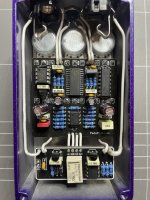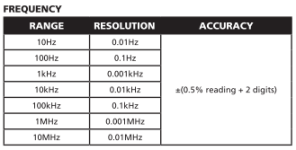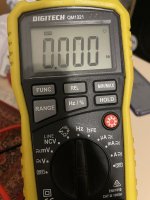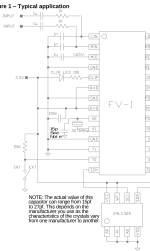owlexifry
Well-known member
first dabble at FV-1. first time using the 'basic relay bypass' board.
finished this a few weeks ago (pcb came with FV-1 presoldered)
was super excited.
sounds really cool.
just wish i could get rid of this noise
in this demo everything is at noon, except mix, which i turn up to noon to bring in the effect (and the noise) at the start.
- noise disappears when mix is turned all the way down.
- noise repeats with the echo repeats.
- noise isn’t really affected by altering positions of any controls (except mix)

i thought it might be coming from the relay switch circuit, so i snuck in a 1N5817 between the relay circuit +9v supply, and that did nothing.
volts:
supply - 8.98v
after 1N5817 - 8.68v
tl072 pin8 - 8.68v
ic3
pin 8 - 3.34v
pin 6 - 3.33v
FV-1
pin6 - 3.33v
pin13 - 3.33v
pin14 - 3.33v
pin26 - 3.33v

is there something i’ve done wrong?
where do i start looking?
finished this a few weeks ago (pcb came with FV-1 presoldered)
was super excited.
sounds really cool.
just wish i could get rid of this noise
in this demo everything is at noon, except mix, which i turn up to noon to bring in the effect (and the noise) at the start.
- noise disappears when mix is turned all the way down.
- noise repeats with the echo repeats.
- noise isn’t really affected by altering positions of any controls (except mix)

i thought it might be coming from the relay switch circuit, so i snuck in a 1N5817 between the relay circuit +9v supply, and that did nothing.
volts:
supply - 8.98v
after 1N5817 - 8.68v
tl072 pin8 - 8.68v
ic3
pin 8 - 3.34v
pin 6 - 3.33v
FV-1
pin6 - 3.33v
pin13 - 3.33v
pin14 - 3.33v
pin26 - 3.33v

is there something i’ve done wrong?
where do i start looking?









